
23 minute read
BUMP UP YOUR STYLE
Part of being a parent is rolling with the punches, so consider an unexpected pregnancy the universe’s way of helping you to learn to do that.”
—Heather Wittenberg
Advertisement
Spring is finally here, and it’s time to hit the beach! Spice up your wardrobe by adding a pop of yellow, or keep it cool by adding comfy shades of gray.
55mm Rectangular Sunglasses. Isabel Marant. ■ nordstrom.com
Short Sleeve Side-Ruched Pregnancy
Top. Yenida. ■ amazon.com
Women's One-Piece Swimsuit.
Hilor. ■ amazon.com
Denim Maternity Boyfriend
Short With Inset Panel. Ingrid & Isabel. ■ ingridandisabel.com
Tie Back Maxi Dress. Boohoo. ■ boohoo.com


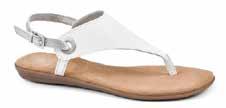
Sonya Wide Hat. florabella. ■ revolve.com
London Sandal. White Mountain. ■ dsw.com
Maternity Dress. Peauty. ■ amazon.com
Short Sleeve Scoopneck Maternity Tee. BumpShow. ■ bumpshow.com




MAMA Leggings. H&M. ■ hm.com
Heather Grey Soft Knit
Maternity Shorts. PinkBlush. ■ pinkblushmaternity.com

18 PINKBLUE | SPRING 2021
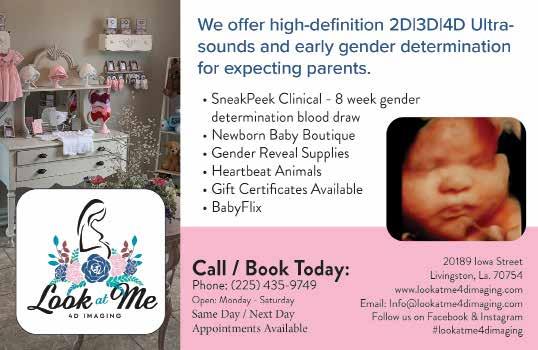


Drinking While Pregnant:
Understanding Fetal Alcohol Spectrum Disorders By Jannean Dixon, M.Ed.
Some pregnant women glow as if lit from the inside. Some of us are miserable from day one to birthgiving day. Being pregnant is hard work; it’s a sacrifice from start to finish and the finish is no picnic either! There are countless books on how to get pregnant and how to be pregnant, and they all mention the things a pregnant woman should not do, touch, or eat. Alcohol is near the top of most keep-away lists, and for good reason. Although, in 2019’s Morbidity and Mortality Weekly Report, Centers for Disease Control and Prevention researchers found that about 1 in 9 pregnant women reported drinking alcohol in the past 30 days.
Mothers who drink alcohol while pregnant risk their babies being born with a Fetal Alcohol Spectrum Disorder (FASD). HealthResearchFunding.org estimates that 40,000 children born each year have Fetal Alcohol Spectrum Disorder, but it may be as many as 80,000 with half of them going undiagnosed.
What is FASD?
FASD, previously known as Fetal Alcohol Syndrome, includes a group of conditions a baby may be born with if the mother drinks alcohol during pregnancy. FASD can affect both the body and the brain, and conditions range from mild to severe. A child with FASD may not develop an IQ beyond 60, which is considered mentally disabled in the US, and community studies estimates of 6-7 year olds in the US living with FASD could be as high as 2-5 percent of the population. Children with FASD often exhibit a collection of conditions, including low birth weight; smaller than typical head size; distinctive facial features; poor reasoning and judgement skills; low Intelligence Quotient (IQ) or intellectual disabilities; difficulty maintaining attention; speech and language delays; higher than typical levels of activity; problems with heart, kidneys, and bones; learning disabilities; vision and/or hearing problems; poor coordination; sleeping and sucking problems in infancy; and shorter than average height. It is estimated that a child born with FAS will cost $2 million over their lifetime between treatment and needs due to disability. The cost to the nation is about $6 billion per year.
What Are the Causes?
There is only one cause of FASD: drinking alcohol while pregnant. When a pregnant mother drinks, the alcohol in the mother’s blood passes through the umbilical cord. Essentially, when a pregnant mother drinks, so does the baby. There is no “safe” time to drink during pregnancy. Local hopeful mother-to-be, Mandy M. shares, “I’m not pregnant yet, but we are trying. As soon as we started trying to get pregnant, I stopped drinking alcohol. I won’t know for a few weeks if we were successful, and I don’t want to put the baby at risk.” Her comments are in alignment with the CDC recommendations.
consume when pregnant,” says Dr. April Mcculloh, a physician who specializes in Family Medicine at Baton Rouge General. “Even small amounts of alcohol in pregnancy can have adverse effects on crucial periods of fetal development, especially within the brain and other organs.”
There are also no safe alcoholic beverages to drink during pregnancy–any beverage containing alcohol can cause FASD. In short–if you are pregnant, trying to get pregnant, or could become pregnant (nearly half of all pregnancies in the US are unplanned!)–avoid alcohol altogether. If you are pregnant and still drinking alcohol, it’s never too late to stop. The baby’s brain will continue to develop throughout the pregnancy, so stopping late is better than never.
How is This Tested/Screened?
Diagnosing FASD can be challenging as there are no definitive medical tests, and the symptoms can mimic ADHD, Williams syndrome, and other conditions. Physicians often look for lower than average head size and birth weight, central nervous system problems, abnormal facial features, and prenatal alcohol exposure. If you suspect your child may have FASD, it is very important to speak with your healthcare provider about interventions. There’s no cure for FASD, but interventions can improve development.
What Are the Treatments?
As with other disorders, early intervention can have a profound effect on those with FASD. Interventions can include medication to help manage symptoms, behavior and mental health counseling, educational interventions, and family and parenting training. Diagnoses before the age of six can help parents establish early intervention therapies. The public school system can also be a great resource for children with disabilities. Contact your local school board office to request a free educational evaluation for your child.
Where Do You Get Help?
For more information about FASD, visit the CDC website, American Academy of Pediatrics FASD Toolkit, National Organization on Fetal Alcohol Syndrome, and your child’s pediatrician.
The Last Word
Local mental health counselor Star Marks shares, “All of the research states to treat the child at the level they are at both physically and emotionally. Stay focused on positive affirmation and look to point out wins versus short falls. Don't move too fast or push too hard in therapy or any other rehabilitative measures, such as occupational or physical therapies. If the child’s sensory system is receiving too much information too quickly, the child will likely shut down and stop receiving all outside information. Try to have realistic goals for both the child and the family. This isn't necessarily a situation where the child ‘won't’ do something rather than ‘can't’ do what you are asking at this time.” ■
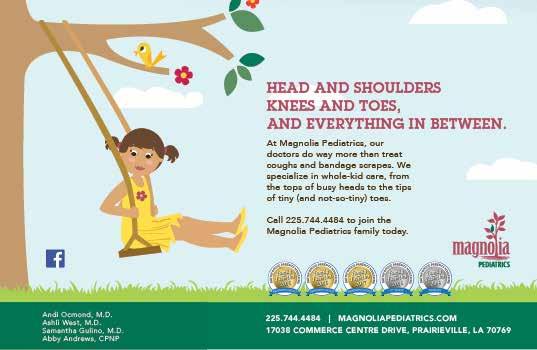
Budgeting After Baby
By Sarah Lyons
Babies cost a lot of money! Diapers, formula, clothes, and baby gear can take a huge chunk out of your monthly budget. Some families find that with the cost of childcare or reducing to a single income makes the adjustment even more difficult than expected. Here are some tips to cut down on spending.

TRIMMING YOUR BABY BUDGET
Diapers
To save on diapers, consider switching to cloth. Modern cloth diapers are easy to use and come in cute designs. The initial cost is typically $10-20 per diaper, but they can be reused for years. If cloth diapers aren’t for your family, there are still ways to save money on disposable diapers. Check manufacturer websites for high dollar coupons and combine with store sales. Generic diapers are another great way to save and they are typically comparable to name brands.
Formula
Breastfeeding is not always an option for families for a variety of reasons, and formula is pricey. Coupons and rebates are readily available from the manufacturer. Go to the manufacturer's website and sign up for additional coupons, and have friends and family do the same. You can also ask your obstetrician and pediatrician for free formula samples.
Baby Gear
Car seat, stroller, high chair, bouncer, swing and more. There sure is a lot of gear for someone so small, and it seems each item costs $100, often more. It’s wise to buy a new car seat that meets current safety standards, but all the other items can be purchased as gently used and later sold again when your family no longer needs them.
Baby Clothes
Babies grow fast! It doesn’t make sense to spend a lot on several cute baby outfits when your child outgrows them only a few weeks later. Consider buying gentlyused clothing and/or asking your friends for hand-me-downs. If you want new items, buy less than you think you will need because they are used for only a short time. get creative. Ideas include having a family or friend watch the baby at a lower rate, trading babysitting with another family, or alternating shifts with your partner to reduce time in childcare. Some companies offer flexible spending plans to pay for childcare with pre-tax money.
TRIMMING OTHER AREAS
Wardrobe
Shopping for new clothes can get to be pretty expensive, especially when it comes to maternity wear. The key to saving money on adult clothing is to shop for versatile pieces that can be worn many different ways. A solid color top can be worn with jeans, slacks, or a skirt and paired with a scarf, necklace or jacket, or worn alone for a variety of looks. Once you have your key pieces, only buy clothing when you really need them.
Food
There are several ways to cut costs in this area. Purchasing groceries with coupons, on sale, or generic brands, can help save money. Also, consider making items from scratch and eating out less to help trim your food budget. A quick Google search will provide you with several $5 meals ideas that you can incorporate into your meal plan as well.
Entertainment
Just because a new baby is in the house doesn’t mean that you have to stop enjoying entertainment. However, how you take in that entertainment might need to be approached in a new way. You do not have to go without movies, concerts, or area attractions, but you should check deal sites to see if there are any options available to you. This will require planning ahead to make sure it fits into the budget and that you have childcare covered, if necessary. Also, consider if items like cable or streaming subscriptions are necessary. Choose to pay for the entertainment you use and enjoy and do away with the rest. Cutting back on streaming subscriptions is a quick way to save money.
Reduce
Our homes are filled with items we rarely use. Consider selling these items to put extra cash in your hand that can be used for all those new baby expenses. Have a garage sale, utilize consignment sales, or sell items in online marketplaces.
TRIM EXPENSES
Look at the family budget and evaluate where you can easily trim expenses. Do you belong to a gym, have club memberships, subscriptions, or other monthly bills that you and your partner do not use enough to justify the expense? Discuss with your partner whether some of these items can be cut to free up the money for other expenses.
DIY
A simple way to save money is to do things yourself. Cleaning and lawn services are nice but can be quite expensive. Taking care of it yourself is free. Instead of paying someone to repair or remodel things around the house, try it yourself first and save the money you would have spent on labor. However, make sure you're careful or it could cost you more later on down the road.
Bringing home a new baby is an adjustment in many ways, and financial priorities may have shifted in your family. In time, you will adjust to your new lifestyle and budget and you will feel comfortable with budgeting after baby. ■

26 PINKBLUE | SPRING 2021
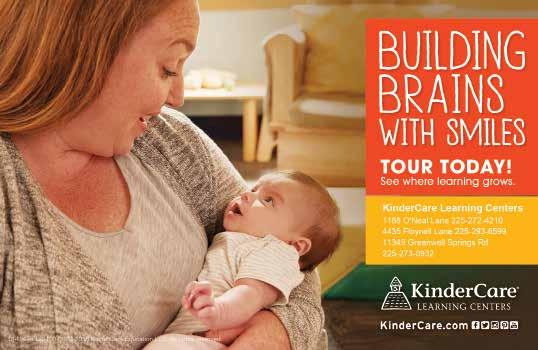
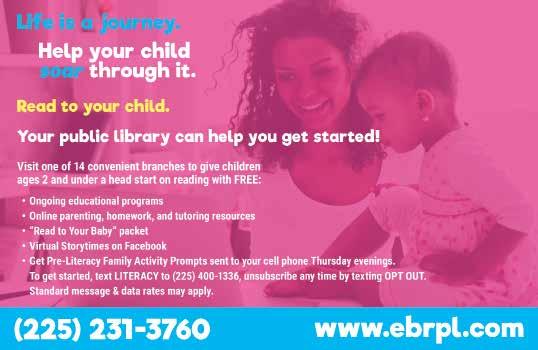
Using a TENS Unit During Pregnancy and Childbirth

By Melanie Forstall Lemoine
Pregnancy and childbirth are usually described as something truly beautiful. The changes associated with a woman’s body are often looked upon as nothing short of miraculous. Although each pregnancy is unique, there is one thing that is often shared among women during pregnancy and childbirth–pain.
General body aches during pregnancy are a common issue for women. This pain and discomfort can be attributed to the immense physical changes occurring in the body and the constant changing hormone levels. As the baby develops and grows, strain is put on the mother’s bones and ligaments, often causing pain in the joints and back.
During labor, of course, there is pain associated with multiple parts of the woman’s body. Many women choose to deliver their baby without medication or the use of an epidural. Managing the pain associated with pregnancy, labor, and delivery can be managed through a variety of low-risk and low-intervention methods, including the use of a transcutaneous electrical nerve stimulation (TENS) unit.
A TENS unit works by sending multiple electronic pulses through the body through small pads that adhere to the skin. The electric pulses stimulate the tissues around the spinal cord and brain causing the body to release natural pain relievers. Essentially, the electronic stimulation temporarily inhibits the brain’s ability to recognize pain signals. The pads can be moved around on the body to stimulate specific areas of pain or discomfort.
Low-Intervention Pain Management
“A TENS unit is a great option for labor pains when other methods haven’t been helpful, or to avoid pain medications,” says Jennifer Wakefield, DONA International Certified and trained birth doula of My Doula Heart. “It works by sending mild electrical impulses to the nerves below the skin to produce endorphins.” The TENS unit can be used from mild pain relief to alleviating pain during the most intense labor contractions.
While a basic TENS unit can be purchased over-thecounter, the best option for use during labor is a unit designed to max out at a lower frequency. “The TENS unit I provide to my clients also has a burst button that delivers continuous impulses for use during a contraction.” The constant stimulation of the nerves essentially reduces the ability of the nervous system to send pain signals to the brain, resulting in less pain during labor.
Personalized Pain Management
One standout benefit of the TENS unit, is the woman’s ability to control her own pain management. When a woman uses a TENS unit during pregnancy and childbirth,
she has direct control over the intensity, frequency, and duration of the stimulation. “The client is in complete control of the frequency and intensity of the unit,” says Wakefield. A patient can control the intensity of the electrical impulses. Essentially, a laboring woman can determine, on her own, how strong she needs the impulses in order to help manage her own pain. Also, she can set the frequency which determines the number of pulses per second. Depending on her own level of pain, a laboring woman can set the frequency to low or high to meet her own individual needs.
Cautions Associated with the TENS Unit
According to Wakefield, this is a low-risk and lowintervention option for most pregnant and laboring mothers. However, while there are no known risks associated with the use of a TENS unit for mother and baby, some women should not use a TENS device at any time.
“Anyone with a pacemaker, epilepsy, or seizure disorder should not use a TENS unit,” says Wakefield. “Additionally, it should not be used on anyone with broken skin or a rash on their back where the adhesive pads would be applied.”
Another thing to consider, is that while the use of water birth as a pain management technique has grown in popularity, a TENS unit cannot and should not be used in or around water. Lastly, the TENS unit cannot be used around emitted gas that can produce a flame. This is specifically important
Additional Methods for Managing Natural Labor Pain
For many pregnant women, there is a preference for lowrisk and low-intervention methods of pain relief, especially during labor. According to Wakefield, intense back pain is often an issue for women during labor. “In recent years, pelvic floor physical therapists attribute this pain to the muscles and ligaments of the pelvic floor,” says Wakefield. She encourages pregnant women to begin exercises prior to labor in order to help prevent this added pain during labor. “For starters, pelvic floor evaluations during the second trimester are great preparation for birth itself, no matter what type of birth is desired.”
Wakefield also suggests other low-intervention options for laboring women. “During labor, hydrotherapy in a tub or taking a shower can be helpful,” says Wakefield. “Changing positions whenever there is discomfort–if it hurts, get off of it!” she says. Finally, she says exploring different counter pressures can also aid in easing labor pains.
As for any intervention during pregnancy and labor, it is encouraged to seek advice from a medical professional. Additionally, while one method of pain management might work for one pregnancy, it may have different results for another. Therefore, it is important to gather as much information as possible and have options ready to be implemented throughout an established birth plan. ■


10 Baby Gifts Parents Can Use By Tiffany Doerr Guerzon
Skip the teddy bears and trinkets and try getting the parents-to-be a truly useful present. Headed to a baby shower in the next few months? Then you will probably be ogling those cute onesies, soft toys, and blankets in the baby section while shopping for the perfect gift. But how about getting the parentsto-be a truly useful present? Here are some items experienced parents know will be greatly appreciated.

Handheld Vacuum Cleaner
A vacuum that charges and is cordless is even better. These are great for quick cleanups, both at home and in the car for when baby starts throwing food and all of life’s little messes.
Battery Charging Station and Rechargeable Batteries
So many items we use for baby run on batteries, from baby monitors to toys. This will give parents one less thing to run to the store for.
Childproofing Items
Consider purchasing a variety of baby safety products, including plug covers, cabinet and drawer latches, and door knob covers. It’s amazing how quickly those cuties morph into crawlers and
reachers. Package the gift in a lidded box so they can just reach for the item they need instead of running to the store late at night.
Diaper Service
If the new parents plan to use cloth diapers, a month or two of paid diaper service can be a lifesaver in that first sleep-deprived month. Diaper services deliver clean, sanitized diapers to your door weekly, and pick up the used diapers. You will never need to wash or even rinse these diapers, just put them in the provided hamper and leave them outside of your door for pick up. Or, if the new parents plan to use disposable, a coupon or gift card for future diaper purchases will be appreciated.
Laundry Service
Similar to the diaper service, a laundry service helps stop all of the piles of clothes from growing in the laundry room. There are several local services that will provide the family in need of laundry help with a bag for their laundry. All they have to do is fill up the bag, and the service will retrieve the bag, wash the clothes and fold them, and return them. A lot of things are happening when baby first arrives at home, so not having to worry about all the laundry is a big help to new parents.
Baby Calendar
A cousin to the baby book, this handy calendar accommodates a sticker on the day a milestone is reached. This is great for busy moms who probably won’t get a chance to fill in the real baby book until after their little one’s first birthday.
Baby Keepsake Box
A memory box is great for tossing in anything you might want to save. Put in baby’s hospital ID bracelet, greeting cards, first pictures, etc. Later, the parent can sort through the stuff and decide what to keep. You can find these at retail stores or Amazon, or have a personalized version made from an Etsy seller. Gone are the days of gourmet dinners for two, and experienced parents know how fast dinner time comes around. Slow cookers come in many sizes and with a variety of bells and whistles. Choose from a programmable version or the oldfashioned model. Either way, you will be a hero for saving dinner.
Send a Meal
If picking up a slow cooker is out of your price range, order them dinner for one night and have it sent directly to their front door. All you need is Waitr, DoorDash, or GrubHub.
A Baby Book
Not the kind in which you record baby’s first words, but instead, an instructional book for the parents. It’s nice to have a reference for those middle-of-the-night questions that keep you awake. Check Amazon or your local bookstore, and choose from a plethora of instructional books to suit any parenting style. ■

Gender Disappointment: How to Deal
By Kim Gilly

Ten tiny fingers and ten tiny toes…boy or girl? No one knows! Gender reveals have become all the rage over the last decade. From pinatas to confetti bombs or exploding baseballs to sprinkle-filled cupcakes…couples go to great lengths to find crazy creative ways to announce whether their new little bundle of joy will be a boy or a girl. But what happens when pink confetti bursts from the balloon when mom or dad was really hoping for blue?
Of course, a healthy baby is the ultimate hope when expecting, but some parents might experience a case of the “gender reveal blues.” This feeling of sadness or disappointment when you find out the sex of your baby is considered gender disappointment, but rest assured, a quick Google search will tell you that this emotion is more common amongst expectant parents than one might think. Here are some explanations leading parents-to-be to feel this way and some things you can do to get you over the hump before baby arrives.
Fear of the Unknown
One of the main reasons some parents might experience gender disappointment is fear of the unknown. Maybe you grew up in a house full of girls, so the thought of having a son seems foreign to you. Or if you are a mom who doesn’t consider herself a “girly girl,” the idea of braids and ballet might seem terrifying. You might simply have preconceived stereotypes about your future family. Clinical Psychologist Shoshana Bennett, PhD, says in the article, Overcoming Gender Disappointment, “I encourage my clients to talk about their fantasies openly, so they can let go of them as quickly as possible. Even if you were to have a child with the gender you wanted, you’d be placing expectations on what the child would be like. The truth is, you don’t know what the child’s temperament will be. They’ll have their own passions. Look forward to discovering them along with him or her.” disappointment is cultural bias. Families might feel pressure to have a “set:” one girl and one boy. Some cultures even put more value on one sex over the other. Parents might also struggle with the idea of a certain sex based on family history. If you had a strained relationship with your own mother or father, you might fear that history could repeat itself. And sometimes it simply boils down to convenience and already being stocked for a certain sex in the clothing and baby gear category.
If you do find yourself having a preference of one sex over the other, finding out the gender while pregnant can allow for time to alleviate some of your anxieties before delivery. Carol Ann Nadeau had three daughters when her son Rafe was born. “Already having





three girls, I wanted our fourth to be a boy, but I didn’t want to wait to find out in the delivery room. If it was another girl, I wanted to give myself time to wrap my head around not having my baby boy.”
Whatever the reason for your gender disappointment, know that you aren’t alone and that there are ways to cope. Stephan Quentzel, M.D., a psychiatrist specializing in pregnancy and childbirth issues, suggests in the article, How to Deal with Gender Disappointment, that the first step toward moving forward is recognizing the feelings of disappointment and to not feel ashamed. “It can sound ugly to say, ‘I wanted a boy and not a girl,’ but it’s normal if you don’t feel immediately thrilled.” Allow yourself to navigate these feelings and try to pinpoint the cause of your disappointment. Talking to your partner is a good place to start, but if it is causing you to feel disconnected to your pregnancy, reaching out to a healthcare professional is always recommended, as there have been studies linking gender disappointment to depression.
Fortunately for most parents, gender disappointment is only temporary. The birth of your child and meeting him or her in person will usually relieve you of your feelings of disappointment almost immediately. Science also plays a role with the release of oxytocin during
childbirth, encouraging the mother-baby bond right away. Meeting your little one for the first time will typically be an experience that you won’t be able to put into words. It’s a joyous time and your brief disappointment will soon fade away as you hold onto those 10 little fingers and 10 little toes. If it doesn't, always speak with your healthcare provider.
Mom Shares
“We were very surprised when we learned that our triplets were all girls. I think we thought–surely with three babies, one of them would be a boy. But no! While it took my husband a little time to wrap his head around the idea of having six girls, he quickly embraced it and we never looked back. As we have learned, the fact that they are all girls doesn’t mean they’re all alike; to the contrary. They are all very different personality-wise. They are unique individuals with different interests, talents, and senses of humor. All that said, there is a lot of hair and hair washing and hair brushing in my house. I have been encouraging short bob haircuts for all, but thus far, I have had no takers. So I guess I’d say, did we ever envision having six girls? Never in a million years, but I wouldn’t trade it for a single second. Life with six girls is an unexpected and beautiful adventure. It still always surprises me, however, how often we get asked–in front of our six girls–if we wished we had a boy! I answer as firmly as I know how that our family is perfect exactly the way it is. Because it really is!” –Chrissy Roussell ■







